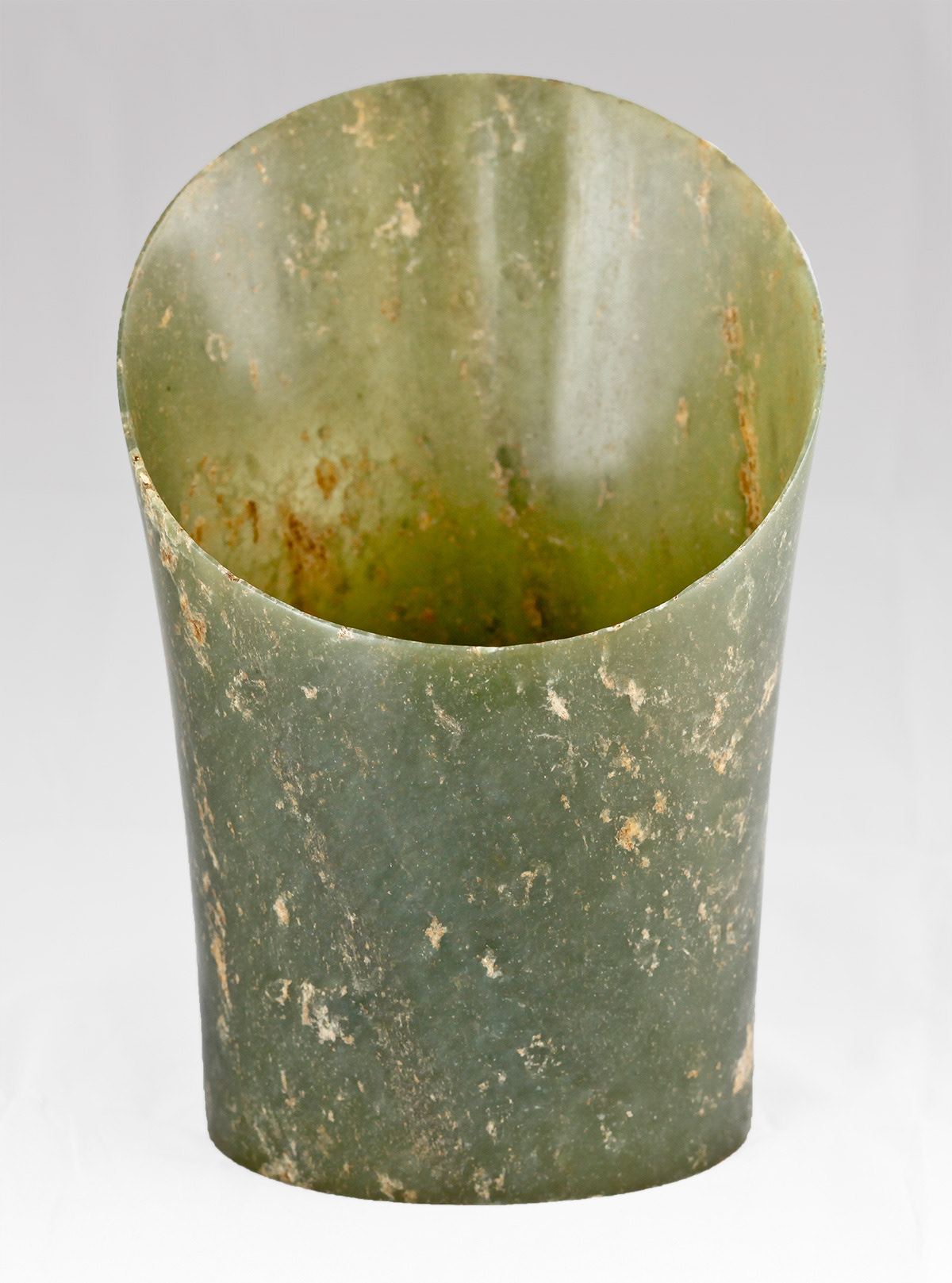

NEOLITHIC PERIOD, HONGSHAN CULTURE, C. 3500 B.C. This elegantly shaped ornament in jade belongs to the Hongshan Neolithic culture, which flourished in north-east China between ca. 4700 to 2900 BC. The jade is shaped like a horse´s hoof, hence its Chinese name, and it was probably used as a head ornament: the two holes drilled just above the lower edge of the jade may have been used for the horizontal insertion of a pin to secure the long hair in place and hold the ornament in an upright position on top of the head. The tube is hollowed with an oval cross-section and thin walls: the lower and upper edges are smoothed down and the whole jade is polished to a high sheen. Nephrite jade 7.675 x 5.375 x 3.25 in. (19.5 x 13.65 x 8.26 cm.) PRICE AVAILABLE UPON REQUEST
